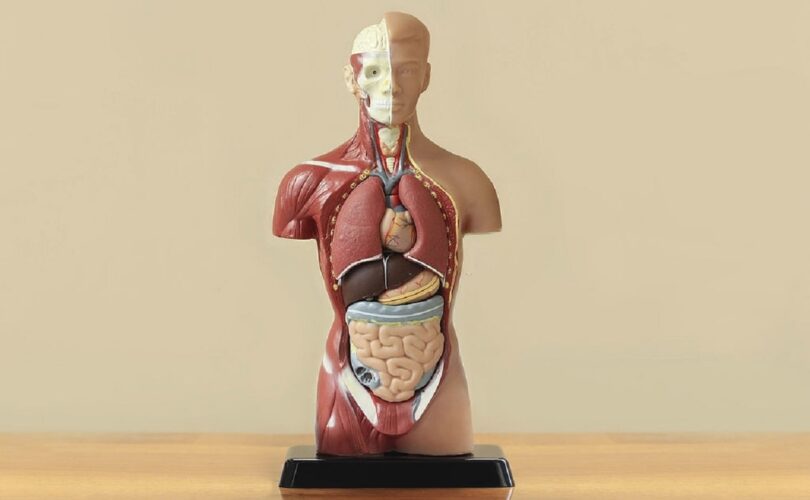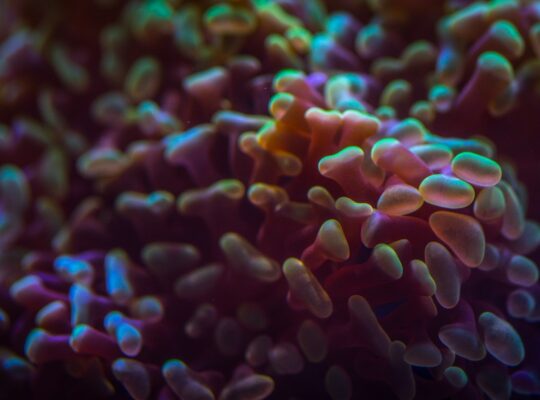Table of Contents
Chapter 2. Structure of cell – its components and their functions.
1.Explain the structure and functions of the cell membrane.
Answer: Structure of the Plasma Membrane
The basic structural framework of the plasma membrane is the lipid bilayer, two back-to-back layers made up of three types of lipid molecules—phospholipids, cholesterol, and glycolipids. About 75% of the membrane lipids are phospholipids, lipids that contain phosphorus. Present in smaller amounts is cholesterol (about 20%), glycolipids (about 5%), lipids with attached carbohydrate groups. The bilayer arrangement occurs because they have both polar and nonpolar parts. In phospholipids, the polar part is the phosphate-containing “head,” which is hydrophilic (hydro- water; philic- loving). The nonpolar parts are the two-long fatty acid “tails,” which are hydrophobic (water hating) hydrocarbon chains. In this way, the heads face a watery fluid on either side—cytosol on the inside and extracellular fluid on the outside. The hydrophobic fatty acid tails in each half of the bilayer point toward one another, forming a nonpolar, hydrophobic region in the membrane’s interior.
The function of the cell membrane
• Branched carbohydrate molecules attached to the outside of some membrane protein molecules give the cell its immunological identity.
• They can act as specific receptors (recognition sites) for hormones and other chemical messengers.
• Some are enzymes.
• Some are involved in transport across the membrane.
2. Describe the functions of the Golgi complex and mitochondria.
Answer:
Golgi Complex
The Golgi apparatus consists of stacks of closely folded flattened membranous sacs. It is present in all cells but is larger in those that synthesize and export proteins. The proteins move from the endoplasmic reticulum to the Golgi apparatus where they are ‘packaged’ into membrane-bound vesicles. The vesicles are stored and, when needed, they move to the plasma membrane and fuse with it. The contents are expelled (secreted) from the cell. This process is called exocytosis
• Modifies, sorts, packages, and transports proteins received from the rough ER.
• Forms secretory vesicles that discharge processed proteins via exocytosis into the extracellular fluid; forms membrane vesicles that ferry new molecules to the plasma membrane; forms transport vesicles that carry molecules to other organelles, such as lysosomes.
Mitochondria
Mitochondria are membranous, sausage-shaped structures in the cytoplasm, sometimes described as the ‘power house’ of the cell. They are central to aerobic respiration, the processes by which chemical energy is made available in the cell. This is in the form of ATP, which releases energy when the cell breaks it down. Synthesis of ATP is most efficient in the final stages of aerobic respiration, a process that requires oxygen
• Generate ATP through reactions of aerobic cellular respiration.
3. Mention different cell organelles with their functions.
Answer:
▪ LYSOSOME: Produces enzymes to destroy bacteria. Breaks down food particles.
▪ RIBOSOME: Produces proteins.
▪ CYTOSKELETON: Internal support system for cell. Acts as a framework
• GOLGI BODY: Modifies, sorts, packages, and transports proteins received from the rough ER. Forms secretory vesicles that discharge processed proteins via exocytosis into the extracellular fluid; forms membrane vesicles that ferry new molecules to the plasma membrane; forms transport vesicles that carry molecules to other organelles, such as lysosomes.
▪ ENDOPLASMIC RETICULUM: Transport system inside cell.
▪ ROUGH ENDOPLASMIC RETICULUM: Has ribosome on its surface and produces proteins
▪ SMOOTH ENDOPLASMIC RETICULUM: Does not have ribosomes on its surface and produces lipids
▪ NUCLEUS: Control center of cell.
▪ FLAGELLUM: Long tail-like structure for cell locomotion.
• MITOCHONDRIA: Generate ATP through reactions of aerobic cellular respiration.
▪ CYTOPLASM: Supports all cell organelles.
▪ CELL MEMBRANE: Semi-permeable to control entry and exit of materials.
▪ NUCLEOLUS: Produces ribosomes.
▪ CHROMOSOMES: Genetic material in the nucleus.
4. Distinguish between the rough and smooth endoplasmic reticulum (ER). What are the functions of ER?
Answer:
The endoplasmic reticulum is an extensive series of interconnecting membranous canals in the cytoplasm. There are two types: smooth and rough. Smooth ER synthesizes lipids and steroid hormones and is also associated with the detoxification of some drugs. Some lipids are used to replace and repair the plasma membrane and membranes of organelles. Rough ER is studded with ribosomes. These are the site of synthesis of proteins, some of which are ‘exported’ from cells, i.e. enzymes and hormones that leave the parent cell by exocytosis to be used by cells elsewhere.
Functions
• Rough ER synthesizes glycoproteins and phospholipids that are transferred into cellular organelles, inserted into the plasma membrane, or secreted during exocytosis.
• Smooth ER synthesizes fatty acids and steroids, such as estrogens and testosterone; inactivates or detoxifies drugs and other potentially harmful substances; removes the phosphate group from glucose-6-phosphate; and stores and releases calcium ions that trigger contraction in muscle cells.
5.Discuss the structure and functions of ribosomes and lysosomes.
Answer: Ribosomes are tiny granules composed of RNA and protein. They synthesise proteins from amino acids, using RNA as the template. When present in free units or in small clusters in the cytoplasm, the ribosomes make proteins for use within the cell. These include the enzymes required for metabolism. Metabolic pathways consist of a series of steps, each driven by a specific enzyme. Ribosomes are also found on the outer surface of the nuclear envelope and rough endoplasmic reticulum where they manufacture proteins for export from the cell.
Lysosomes are small membranous vesicles pinched off from the Golgi apparatus. They contain a variety of enzymes involved in breaking down fragments of organelles and large molecules (e.g. RNA, DNA, carbohydrates, proteins) inside the cell into smaller particles that are either recycled or extruded from the cell as waste material. Lysosomes in white blood cells contain enzymes that digest foreign material such as microbes.
6.Draw a neat labeled diagram of cell and write the functions of the nucleus.
Answer:
Functions of nucleus
1. Controls cellular structure.
2. Directs cellular activities.
3. Produces ribosomes in nucleoli.
SHORT ANSWERS (2M)
1. Write the functions of mitochondria.
Answer: Mitochondria are membranous, sausage-shaped structures in the cytoplasm, sometimes described as the ‘power house’ of the cell. They are central to aerobic respiration, the processes by which chemical energy is made available in the cell. This is in the form of ATP, which releases energy when the cell breaks it down. Synthesis of ATP is most efficient in the final stages of aerobic respiration, a process which requires oxygen.
• Generate ATP through reactions of aerobic cellular respiration
2. Explain the functions of the plasma membrane.
Answer:
• Branched carbohydrate molecules attached to the outside of some membrane protein molecules give the cell its immunological identity.
• They can act as specific receptors (recognition sites) for hormones and other chemical messengers.
• Some are enzymes.
• Some are involved in transport across the membrane.
3. Why are mitochondria referred to as “power houses” of the cell?
Answer: They are central to aerobic respiration, the processes by which chemical energy is made available in the cell. This is in the form of ATP, which releases energy when the cell breaks it down. Synthesis of ATP is most efficient in the final stages of aerobic respiration, a process which requires oxygen.
4. Why the nucleus is called the control center of the cell? Write its functions.
Answer:
Function of nucleus
1. Controls cellular structure.
2. Directs cellular activities.
3. Produces ribosomes in nucleoli
5. Describe mitochondria
Answer: Mitochondria are membranous, sausage-shaped structures in the cytoplasm, sometimes described as the ‘power house’ of the cell. They are central to aerobic respiration, the processes by which chemical energy is made available in the cell. This is in the form of ATP, which releases energy when the cell breaks it down. Synthesis of ATP is most efficient in the final stages of aerobic respiration, a process which requires oxygen.
6. Lysosomes and chromosomes
Answer: Lysosomes are small membranous vesicles pinched off from the Golgi apparatus. They contain a variety of enzymes involved in breaking down fragments of organelles and large molecules (e.g. RNA, DNA, carbohydrates, proteins) inside the cell into smaller particles that are either recycled, or extruded from the cell as waste material. Lysosomes in white blood cells contain enzymes that digest foreign material such as microbes. In the nucleus of each cell, the DNA molecule is packaged into thread-like structures called chromosomes. Each chromosome is made up of DNA tightly coiled many times around proteins called histones that support its structure.









[…] Chapter 1. Scope of anatomy and physiology, basic terminologies used in this subject Chapter 2. Structure of cell – its components and their functions. […]
[…] 1. Scope of anatomy and physiology, basic terminologies used in this subject Chapter 2. Structure of cell – its components and their functions. Chapter 3. Elementary Tissues of The Human […]